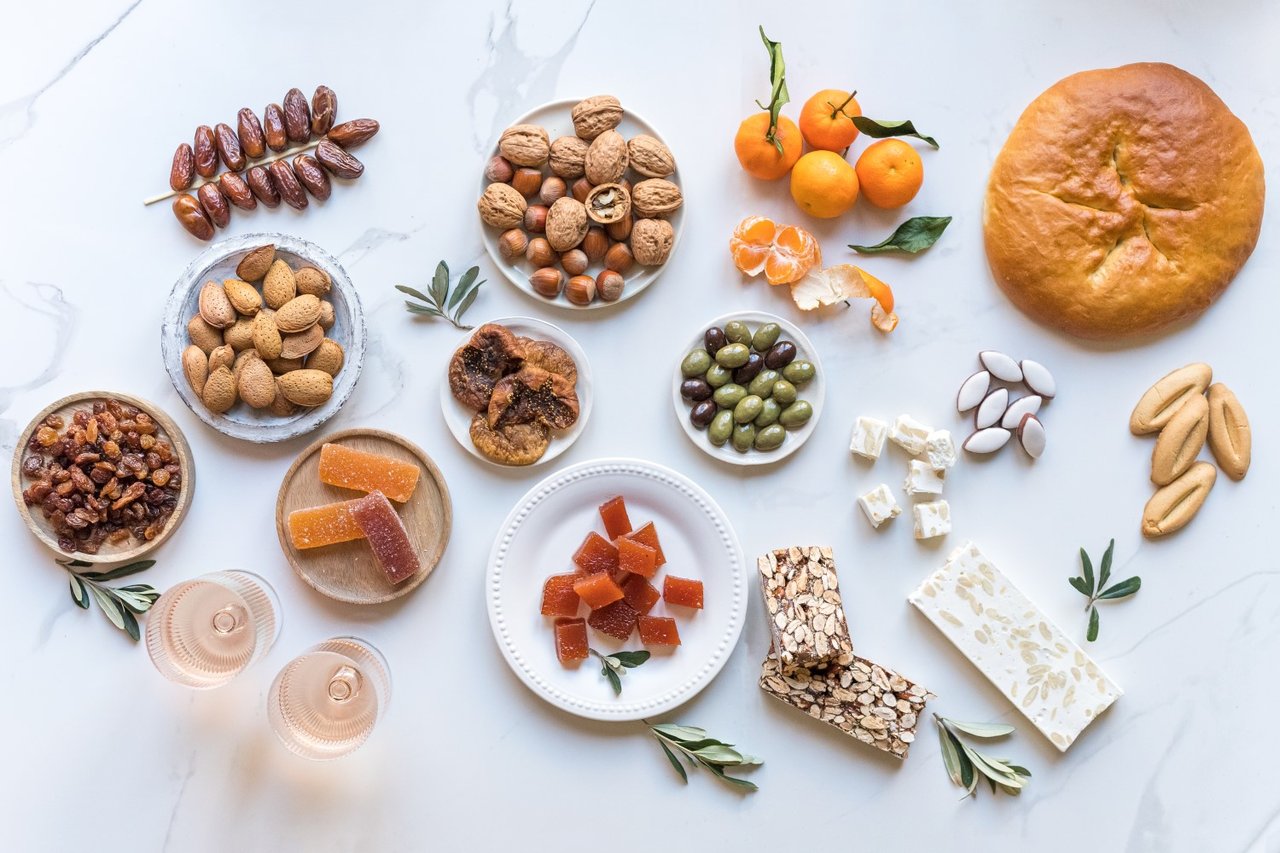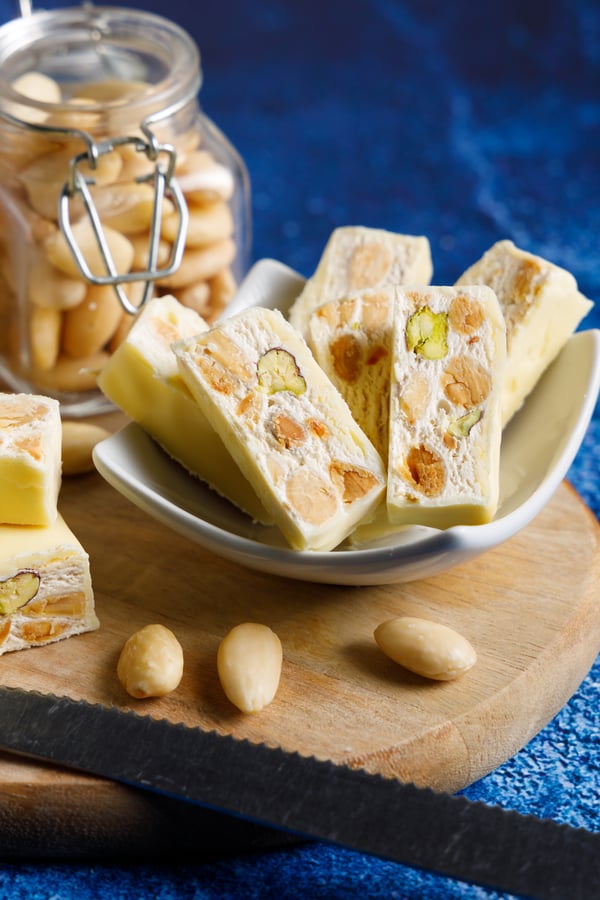The thirteen desserts, or Les Treize Desserts, are a long-standing tradition in Provence, adding a unique touch to the Christmas season.
These desserts are shared with family and friends following the Christmas Eve meal, each representing an aspect of regional culture, history, or religious significance. The custom calls for thirteen specific treats, a nod to Jesus and his twelve apostles, to be enjoyed by every guest - a symbol of abundance and togetherness.
A history rooted in Provence
Though the origins of the thirteen desserts might feel ancient, the first mention of this custom is recorded in a 1925 issue of La Pignato, a Provençal newspaper, where Dr. Joseph Fallen insisted on “thirteen, yes thirteen, no more if you like, but not one less.” Today, each dish reflects different layers of Provençal culture, with some items unique to certain towns or family traditions. While the midnight mass tradition has largely faded, the ritual of gathering around a table of abundant desserts endures.
A closer look at the thirteen desserts of Provence
The thirteen desserts vary across regions but are presented simultaneously on the table, often left out for three days, honouring the spirit of the season. Here’s what you can expect:

1. Pompe à l’Huile
A subtly sweet bread made with olive oil and orange blossom, Pompe à l’Huile is traditionally broken rather than cut, symbolising the breaking of bread at the Last Supper. It holds an essential place among the thirteen desserts, representing unity and the spirit of sharing that defines the Provençal Christmas.
Where to find: See a full guide on where to buy Pompe à l’Huile in Marseille on the Marseille Tourism website.
2. White nougat (nougat blanc)
White nougat, made with honey, almonds, and pistachios, represents purity and the light of the winter solstice, celebrating the hope and new beginnings of the festive season. Its delicate sweetness is a reminder of the light amid the winter’s darkness.
Where to find: La Boutique de Delices in Sault, known for its delicate, traditional nougats crafted with regional ingredients.
3. Black nougat (nougat noir)
A crunchy, dark nougat made from honey and almonds, black nougat symbolises life’s challenges and the darker days of winter. Paired with white nougat, it brings balance to the table, honouring the duality of light and dark, good and difficult times.
Where to find: La Boutique de Delices in Sault, known for its delicate, traditional nougats crafted with regional ingredients.
4. Calissons d’Aix
This almond and candied melon delicacy from Aix-en-Provence has a smooth, rich flavour, representing Provence’s candy-making tradition. The calisson is considered a symbol of celebration and regional pride, its sweet, refined taste a true delight for the holiday season.
Where to find: Léonard Parli in Aix-en-Provence, a historic candy maker celebrated for their Calissons, an essential part of the Provençal dessert table.
5. Quince paste (pâte de coing)
Quince paste adds a tangy, fruity touch to the table and is often made in autumn, saved especially for Christmas. This paste symbolises the bounty of the local harvest and Provence’s culinary skill in preserving seasonal fruits for winter festivities.
6. Dates
Symbolising Christ’s journey from the East, dates bring a unique sweetness to the table and are said to represent the connection between Provence and the holy lands. They add a touch of tradition, reminding families of the season’s spiritual roots.
Where to find: Les Halles de Marseille, where a variety of fresh dates are available, perfect for the holiday season.
7. Fresh fruits
Winter fruits such as oranges, apples, and grapes offer a taste of the season’s natural bounty and a reminder of Provence’s agricultural heritage. The inclusion of these fruits links the holiday feast to the autumn harvest, showcasing nature’s generosity.
Where to find: Explore the markets in Provence for fresh fruit and vegetables.
8. Candied fruits (fruits confits)
Colourful and sweet, candied fruits from Provence - especially those from Apt - add a bright and sugary contrast to the table. They represent the region’s expertise in preserving summer fruits, ensuring a taste of warmer seasons even in the depths of winter.
Where to find: The Confiseur Lilamand, located in Saint-Rémy-de-Provence and L'Isle-sur-la-Sorgue, is an artisanal establishment specialising in exceptional candied fruits since 1866. Renowned for its traditional expertise, it embodies the excellence of Provençal gastronomy.
9. Chocolate
Although chocolate is a more recent addition, it has quickly become a favourite, often in the form of chocolate-covered almonds shaped like olives. This modern twist adds a note of indulgence to the holiday tradition, while also honouring Provence’s almond-growing regions.
Where to find: Puyricard Chocolaterie in Aix-en-Provence, offering fine chocolates including almonds covered in chocolate, shaped to resemble olives.
10. Navettes
These small, boat-shaped biscuits are flavoured with orange blossom and symbolise Mary Magdalene’s arrival on the Provençal coast. Their subtle taste and unique shape add a touch of Mediterranean flavour and history to the dessert spread.
Where to find: Four des Navettes in Marseille, the oldest bakery specialising in Navettes, which have been enjoyed for over two hundred years.
11. Muscat grapes
Stored carefully since autumn, Muscat grapes represent Provence’s winemaking heritage and bring a note of sweetness from the sunny harvest days. These grapes link the Christmas table with the local wine culture, highlighting the importance of the vine in Provence.
12. Exotic fruits
Adding a hint of surprise, exotic fruits like kiwis, pineapples, or mangoes reflect Provence’s trade connections and the region’s openness to new flavours. These fruits bring colour and a touch of adventure to the table, marking the evolving culinary landscape of Provence.
13. The four beggars (les quatre mendiants)
The "four beggars," or les quatre mendiants, are perhaps the most symbolic elements of the thirteen desserts. Each dried fruit or nut represents one of the four monastic orders, with each item’s colour and characteristics symbolising aspects of the order’s life and values.
Dried figs (Franciscans)
Almonds (Carmelites)
Raisins (Dominicans)
Walnuts or hazelnuts (Augustinians)
Where to find: Confiserie du Roy René in Aix-en-Provence, where you can purchase assortments of these traditional dried fruits and nuts, completing the dessert spread.
These thirteen desserts weave together the rich flavors and cherished traditions that make a Provençal Christmas so unique. Each sweet bite offers a taste of Provence’s heritage, connecting locals and visitors alike to the region’s diverse culinary roots. We wish you warm wishes for the upcoming festive season.
A bientôt,
The Provence Holidays Team







































